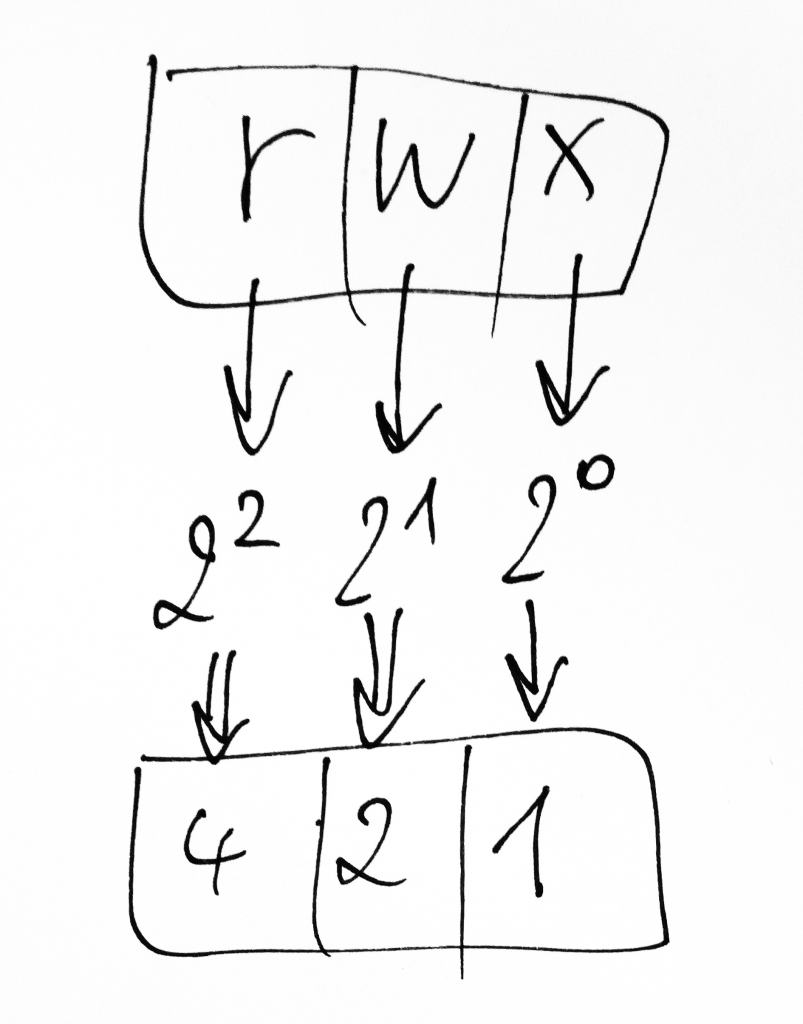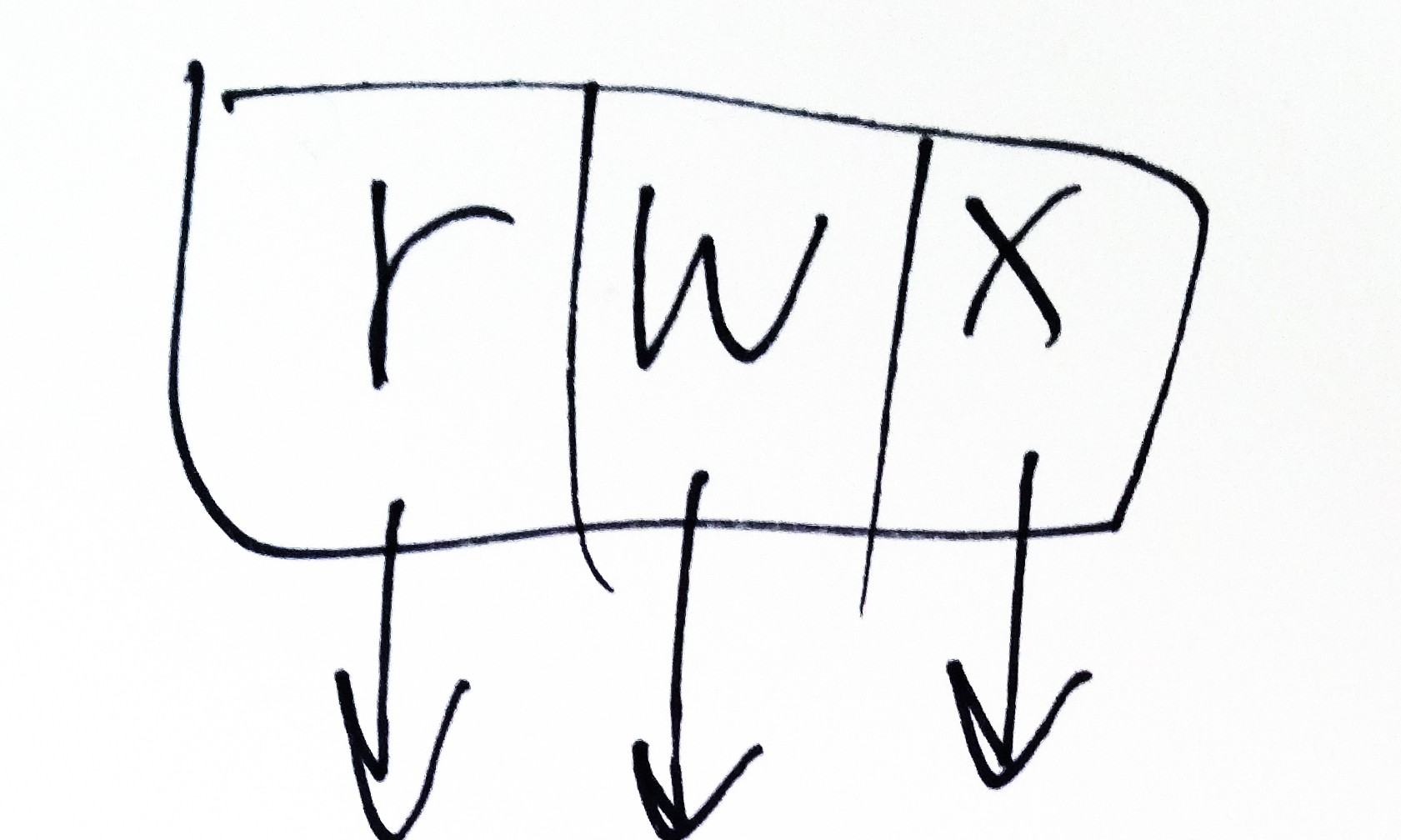Mode bits in Linux/Unix have been puzzling newbies to no end:
-rwxrwxrwx. 1 owner group 420 Dec 21 12:46 .bash_history
The first mode bit designates the type of the item; the following nine mode bits indicate access permissions on the item with respect to the owner, the group and all other users.
Special file designator
The first character field is a special file designator. It can indicate that an item is:
- a directory (d);
- a symlink or symbolic link (l);
- a Unix socket (s);
- a block device (b);
- a named pipe (p) such as initctl;
- a character device (c);
- a “door” (D); rarely used, but nonetheless supported.
For lack of a letter, a leading ‘–‘ in place of a special file designator indicates that the item in question is a regular file.
Permissions (file mode) bits
Each consecutive three characters within the nine permissions bits represent privileges that may be assigned to the owner of an item (the first three characters after the special file designator), the group (the next three characters), and/or everyone else (the next three characters). Unix/Linux supports the following permissions:
- read (r);
- write (w);
- execute a file or list a directory or perform a search within a directory (x);
- in the owner’s or group’s permissions: set-user-ID mode on a file that is not executable (S);
- in the owner’s or group’s permissions: set-user-ID mode on an executable file (s).
For example the following notation:
-rw-r----- someuser somegroup filename
translates as follows:
- the item is a file (-),
- the user ‘someuser’ has read and write permissions (rw-) on it,
- the group somegroup has only read permissions (r–) on it, and
- everyone else can neither read nor write nor execute the file (—).
Setting read, write, and execute permissions for the owner, group, and everyone else
Unix permissions can be expressed numerically as powers of two:
- r equals 4 (2^2; the lack of this privilege is represented by a 0),
- w equals 2 (2^1; the lack of this privilege is represented by a 0),
- x equals 1 (2^0; the lack of this privilege is represented by a 0).
This designation ensures that there is no room for overlaps. Undefined permissions aren’t possible, either. It’s as clear cut as it gets.

To arrive at a numerical value for permissions that affect an entity class such as the owner, the group or everyone else (meaning all users that neither belong to the group nor own the object), all you have to do is sum up the permissions that represent privileges of this entity class (the owner’s, the group’s, and everyone else’s permissions, one single digit for each class).
If an entity class such as the owner, the group or ‘everyone else’ has read (4), write (2), and execute (1) permissions, these equal 7 (4+2+1=7).
Likewise, if an entity class such as the owner, the group or ‘everyone else’ can read (4) and execute (1) a file but not write (0) to it, the permissions equal 5 (4+0+1=5).
If an entity class such as the owner, the group or ‘everyone else’ has read (4) permissions only, these permissions are represented by the digit 4 (4+0+0=4).
This is how you can change privileges on a file in a way that only grants its owner read, write, and execute permissions:
chmod 700 filename ls -l filename -rwx------ owner group filename
Inheritance
When a new file is created, it usually inherits the group id of its creator. However, there are exceptions from the rule.
SGID
If you want new files to inherit the group id of their parent folder, enable the SGID (Set Group ID on execution) bit on that folder.
Sticky bit
In addition to the above, the permissions to delete or rename a file or directory can be limited to its owner and the root user by means of setting a sticky bit (mode 1000) in one of two scenarios:
- sticky bit on an object without execute or search permissions (T);
- sticky bit on an object that is either an executable file or a searchable directory (t).
In each case, the sticky bit appears in place of the last one of the three mode bits that denote permissions for “everyone else”.
Alternate access method designator
Following the file mode bits is a single character that specifies an alternate access method such as an access control list. When the character following the file mode bits is a space, there is no alternate access method. When it is a printing character, then there is such a method.
GNU ‘ls’ command uses a dot (‘.‘) to indicate a file with an SELinux security context and no other alternate access method. A file with any other combination of alternate access methods is marked with a ‘+‘ character.
In order to read out the alternate access methods, you can use the command:
getfacl
for example like this:
-rw-------. 1 centos centos 586 Oct 21 15:03 authorized_keys getfacl . # file: . # owner: centos # group: centos user::rwx group::--- other::---
Tip: use this SELinux label for a temp directory
chcon -t tmp_t temp

Leave a Reply